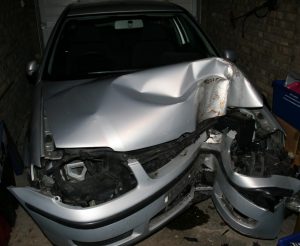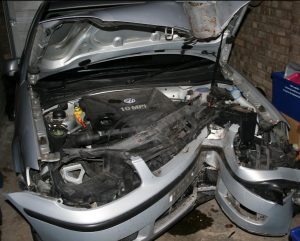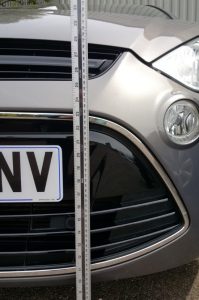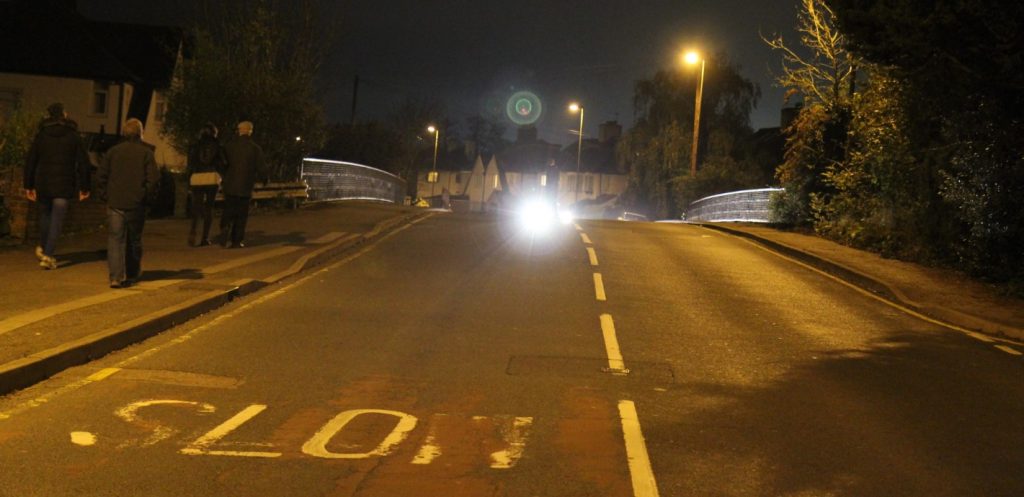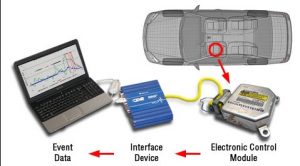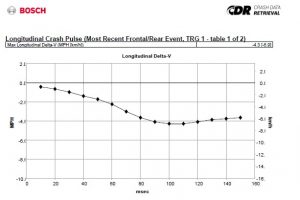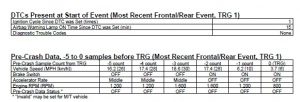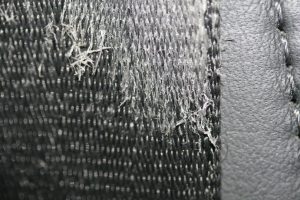Expert Witness Services
The term “forensic” is an adjective, which means that our reports and investigations have been prepared in a manner suitable for presentation at court.
At the outset of your enquiry, the collision investigator will analyse the available evidence & the case papers and, when necessary, discuss the case with you before providing a free estimate for the work necessary to carry out your instructions.
The Collision Investigator is able to:
- Check the methodology and conclusions obtained on behalf of the Prosecution.
- Re-interpret the findings in the light of your client’s explanation of events.
- Examine additional evidence.
- Prepare reports or Section 9 Statements for use in Court.
- Attend court to give evidence, or to support the Defence team by assisting with cross-examination.
The severity, nature and extent of road traffic collisions are very diverse. Road traffic collisions can be the culmination of a number of different events involving a combination of factors either causatory or contributory.
The Collision Investigator will look at the available evidence as a whole, both physical & witness, and prepare reconstruction reports, comment on contributory negligence and, in doing so, address factors including vehicle speed, condition of vehicles, the road layout, lines of sight, visibility issues, human factors, driver reactions, pedestrian movement, pedestrian conspicuity, carry out reconstructions at the collision scene at any time of day relevant to the circumstances, weather conditions, component failure and tyre failures and assess CCTV footage.
Accident (collision) Analysis & Investigations:
Physical evidence, witness evidence, vehicles involved, road layout & geometry, weather conditions, vehicle dynamics and driver behaviour.
Accident (collision) Reconstruction:
Tyre, grind & slide marks, pedestrian throw distance, speed and movement of pedestrians, coefficient of friction, driver reaction times, mass of vehicles, vehicle performance, vehicle test data and position of vehicles at impact can all be modelled mathematically in combination with the fundamental laws of motion in order to determine speeds and a reconstruction of events.
Vehicle & component examination: The accident vehicles and their component parts can be examined for any defects or failures. This can assist in discovering why a particular accident occurred. Any type and size of vehicle can be examined including LGV’s, cars, motorcycles, heavy plant machinery and pedal cycles.
Forensic Tyre Examinations: Our experts are trained to an advanced level in all aspects concerning the construction of tyres & the analysis of tyre failures and tyre / wheel damage.
Surveying & Scale Plans: Professional & accurate computer generated scale plans of accident scenes and crime scenes.
Scale representations of vehicles can be shown in relation to physical and witness evidence in order to show the position of vehicles at impact and ultimately a visual reconstruction of the accident.
Photographs & Video: Standard and digital technology is utilised to illustrate road markings, geometry, topography, signing, lines of sight, limits of visibility, positions of witnesses, pre & post impact movement of vehicles / pedestrians, vehicle damage & defects.
Forensic light bulb Examinations: We use high level microscopy in assessing whether automotive light bulbs were illuminated at the time of impact.
Forensic Tachograph analysis: Driver’s hours & regulations, analysis & interpretation of digital tachograph data.
Fraud/Damage Consistency: In cases involving suspected fraudulent insurance claims and possible staged or contrived collisions we can look at the whole circumstances, road layout, vehicle dynamic and carry out forensic inspections for damage consistency.
We also have the ability and expertise to download data from event data recorders (EDR’s) from compatible vehicles and then analyse the crash data retained.
CCTV & Imagery Analysis:
CCTV and dash cam footage is now in regular use throughout the UK and can provide critical evidence when conducting speed assessments or just a general overview/analysis of an accident as it occurs. We can review the CCTV evidence in conjunction with the application of Forensic Accident Analyses where critical detail is often overlooked.
Analysis of all forms of CCTV, Video and Imagery.
Pedestrian Collisions:
When collisions occur involving pedestrians, particularly at night, we will apply the latest scientific and human factors principles and consider pedestrian conspicuity, often carrying out reconstructions at night in order to see how well a pedestrian contrasted with their surroundings under the prevailing conditions and how this might affect how well a driver could see them.
We can determine impact speeds, how long the pedestrian was in the road and how visible they were to an approaching motorist in the prevailing circumstances.
3D Modelling & Computer Simulations: We can model certain data in order to prepare 3D simulations of road traffic collisions using the latest highly advanced computer software entitled FARO and ARAS360HD.
Event Data Recorder Imaging & Analysis:
- Vehicles manufactured in the last 20 years have begun to include devices that have recording capabilities. The devices are called Electronic Data Recorders (EDR) and are often referred to as “Black Boxes”.
- 96% of vehicles being manufactured today have EDR capabilities.
- The EDR capabilities are most often built into the vehicle airbag electronic control unit.
- EDR data can contain up to 10 seconds of pre-crash data.
- EDR data is recorded by the millisecond, so that changes in the data can be viewed in the fractions of a second range.
- EDR can include data such as:
- Vehicle speed
- Engine RPM
- Applied throttle percentage
- Brake pedal position (applied or not applied)
- Hydraulic brake system pressure
- Anti-lock brake activation
- Stability control activation
- Vehicle deceleration rates
- Seat belt status (buckled or not buckled)
- Occupant status (driver and passenger presence
- Air bag deployment details
- Steering input
- Transmission status
Elliott Forensics is dedicated to being at the forefront of this technology and how it can be utilised in collision investigation. Our team of certified Bosch technicians and data analysts can retrieve and analyse pre-crash data from these modules.
Death by dangerous/Careless driving: Following the introduction of the new road traffic offence of causing death by careless driving motorists are increasingly finding themselves facing up to 5 years’ imprisonment in cases involving fatalities. These new offences were introduced to address public concern regarding cases involving fatalities where the defendant’s driving was not considered dangerous and minimal sentences were therefore applied.
To assist the court the Sentencing Guideline Council has produced guidelines. It is therefore extremely important that driver’s and those acting for them obtain advice and a second opinion. Even in cases where a driver has been found guilty of careless driving or is willing to plead guilty, a report bringing together the mitigating factors and thereby enabling the court to evaluate the degree of carelessness may be essential when it comes to sentencing. It could mean the difference between a custodial and non-custodial sentence.
Motorcycle accidents:
There are considerable differences between motorcycles and 4 wheeled vehicles during collisions and how they perform on the road. Handling dynamics, occupant/passenger kinematics, differences in construction, performance, visibility of and how they generate marks on the road surface, amongst other things, are all taken into account when reconstructing collisions involving motorcycles. Our Experts are highly experienced in investigating motorcycle collisions.
Personal injury – low velocity/whiplash:
In order to understand the response of vehicles during a collision it is necessary to first understand the generic response of different materials and bumper constructions to the application of loads.
We have carried out our own low velocity crash testing with a variety of different makes of cars to determine/assess how different bumper constructions behave during low velocity contacts and, using crash dummies and load cells/decelerometers, how this affects the peak accelerations and coefficient of restitutions for different scenarios. This testing is an on-going research project.
We are also conducting testing into the magnitude of forces associated with ordinary motoring scenarios such as driving over speed humps, up and down kerbs to see how they compare to the forces involved in some low velocity rear end collisions where unusual occupant movement is claimed.
Seatbelts:
The seatbelt is the primary safety device for occupant/passenger safety. The purpose of the seat belt is to restrict the movement of the occupants within the vehicle, in the vast majority of cases to stop occupants being ejected and to keep occupants fixed into their seats so as to minimize the potential for serious injury.
A correctly fitting lap and shoulder belt secures an occupant to their seated position within the passenger compartment thereby minimising or eliminating the potential for contact with the vehicle interior including the back of seats in front, the windscreen and other internal structures as well as other occupants inside the vehicle.
During an impact of sufficient magnitude, forces are applied to the load bearing parts of the seat belt mechanism/components (common points) which are acting to hold the occupant in place. When large forces are involved the seat belt webbing will stretch and the friction between the belt surfaces of the tongues and the belt fabric generate significant heat, producing witness marks in the form or friction markings and burning on the surfaces in contact. It is this characteristic physical evidence which can assist in determining whether a seat belt was being worn or not at the time of a collision.
Our Experts are highly experienced in the examination of seatbelts and seatbelt mechanisms.

